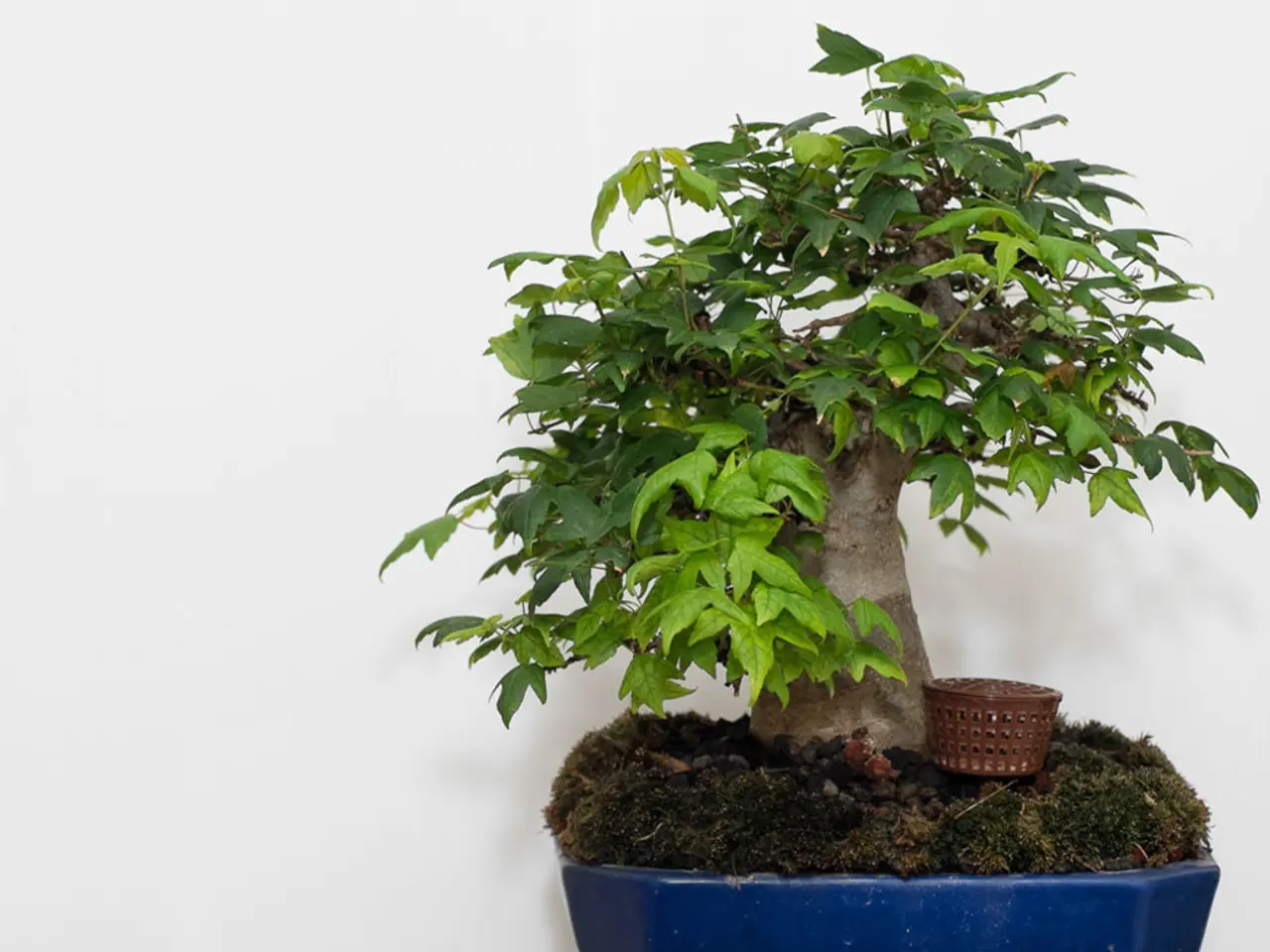Methods for Smaller Bonsai Root Systems: Ensuring Vigorous Growth
Caring for Bonsai Trees: The Importance of Root Management
Bonsai trees, with their miniature stature and intricate beauty, are a testament to the art of cultivating nature. However, maintaining the health and vitality of these tiny masterpieces requires a keen understanding of their root systems.
The Benefits of Fresh Soil
Fresh soil offers a clean slate for bonsai roots, allowing them to grow unobstructed and untangled. This makes repotting easier, reducing the risk of root damage. Fresh soil is essential for promoting healthy root growth, enabling the tree to absorb water and nutrients more efficiently, and promoting healthy growth and development.
Revitalizing the Root System
Reducing the root ball revitalizes the tree's circulatory system, allowing water and nutrients to flow unimpeded. This process promotes new, finer root growth, enhances water and nutrient uptake, and improves overall vigor and resilience.
Identifying Rootbound Conditions
To recognize rootbound conditions in bonsai trees, watch for signs such as roots visibly circling or densely packed around the inside of the pot, stunted growth, poor soil aeration leading to reduced oxygen around roots, and symptoms similar to nutritional deficiencies or stress.
Addressing Rootbound Conditions
When rootbound conditions are detected, it's important to take action. The steps to address this issue include carefully removing the bonsai from its pot to inspect the root system, pruning away circling, damaged, or excessively long roots, repotting the bonsai in fresh, well-draining bonsai soil, and adjusting watering practices to avoid overwatering.
Choosing the Right Container
When selecting a container, consider the size, material, and drainage capabilities. Unglazed ceramic or terracotta pots are ideal, as they allow for air and water to penetrate the soil. Containers with good drainage holes prevent water from accumulating and causing root rot, while avoiding plastic or metal containers, which can retain heat and moisture, harming the roots.
Pruning for Healthier Root Growth
Pruning dead roots enables the bonsai to redirect energy towards healthier root growth. This process, called root ball reduction, allows for the removal of decaying organic matter and prevents the spread of disease. Pruning the roots encourages the growth of new, finer roots, which will further enhance water and nutrient uptake.
Mastering Root Management
Effective root management is a nuanced art that requires a deep understanding of the delicate interplay between root development, water uptake, and overall tree liveliness. Mastering root management skills is essential for creating a thriving environment for bonsai trees.
Regular Inspection and Maintenance
Regularly inspecting root development is important to identify potential issues before they become severe. By following these guidelines, you can prevent oxygen deprivation to the roots, encourage healthy root spread, and maintain bonsai vitality. Regular inspection and timely repotting every 1-3 years depending on growth rate also help avoid severe rootbound conditions.
By embracing the art of root ball reduction, you can liberate bonsai trees from the constraints of rootbound conditions, revealing a new era of vitality and aesthetic excellence. As the tree's roots breathe anew, its branches flourish, and the bonsai masterpiece comes alive, radiating an aura of serenity and refinement.
Fresh soil serves as a foundation for promoting healthy root growth, fostering more efficient water and nutrient absorption in bonsai trees. In home-and-garden pursuits, it is essential to choose an appropriate container, such as unglazed ceramic or terracotta pots, with good drainage to ensure proper air and water penetration for the bonsai's root system.
Lifestyle practices like pruning dead roots not only encourage the growth of new, finer roots but also provide a thriving environment for bonsai trees. By maintaining and regularly inspecting the root system, one can ensure healthier plants and a continual appreciation for the art and science of bonsai cultivation.




